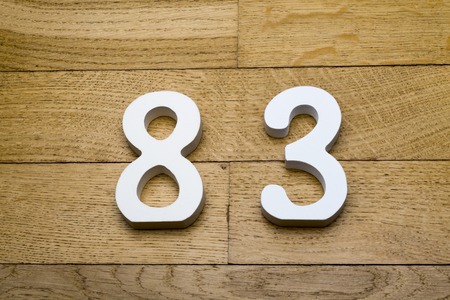Historical Roots of Seers in British Folklore
The enduring legacy of seers in modern British culture finds its genesis in the rich tapestry of myth and folklore that has shaped the British Isles for centuries. The figure of the seer, often regarded as an intermediary between the mundane and the mystical, is deeply embedded within Britain’s collective memory. In ancient times, seers were revered not merely as fortune-tellers, but as custodians of communal wisdom, possessing insight into events yet to unfold and guiding leaders through periods of uncertainty.
Early Origins and Mythic Traditions
Seers feature prominently in early Celtic and Anglo-Saxon traditions, where they were often associated with druidic practices and shamanistic rituals. These individuals—sometimes referred to as wise women, cunning folk, or prophets—were believed to possess the ability to divine hidden truths through visions, dreams, or natural signs. Their counsel was sought by chieftains and kings alike, cementing their role within societal hierarchies.
Key Historical Figures
Among the most iconic seers in British folklore stands Merlin, the enigmatic adviser to King Arthur. His legend blends historical conjecture with mythic embellishment, symbolising both political counsel and magical foresight. Other noteworthy figures include Mother Shipton, a Yorkshire prophetess whose alleged predictions captivated public imagination from the 16th century onwards. Such characters exemplify how seers were woven into local lore, shaping perceptions of fate and destiny.
Cultural Contexts of Reverence
The reverence for seers was not solely rooted in superstition but reflected broader cultural attitudes towards knowledge, spirituality, and power. Communities turned to these individuals during times of crisis or transition—plagues, wars, royal successions—believing that their pronouncements could alter the course of history. This tradition fostered a lasting fascination with prophecy and divination that persists in contemporary British culture.
2. The Transformation of Seers’ Roles: From Ancient Times to the Modern Age
Throughout British history, seers have occupied a unique and evolving position within society. In ancient Celtic and Anglo-Saxon communities, seers were revered as spiritual intermediaries, entrusted with the crucial tasks of divination, prophecy, and ritual guidance. Their insights shaped tribal decision-making, agricultural cycles, and even royal successions. However, as British culture underwent profound social, religious, and technological changes, the perception and function of seers shifted dramatically.
The transition began in the medieval era when Christianity redefined spiritual authority. Seers practices were often recast as heretical or superstitious, leading to their marginalisation or assimilation into folklore as figures like Merlin or Mother Shipton. By the Victorian period, with the rise of scientific rationalism and spiritualism alike, seers found new roles as mediums or clairvoyants—straddling the line between entertainment and genuine belief.
In the contemporary UK context, the role of seers has been transformed yet again. No longer confined to village elders or clandestine mystics, seers now appear in popular media, literature, and even reality television. This shift is encapsulated in how modern British society consumes and interprets mystical knowledge—not as absolute truth, but as a source of personal insight or cultural fascination.
| Historical Era | Societal Role of Seers | Public Perception |
|---|---|---|
| Ancient Britain | Spiritual guides and tribal advisors | Respected and integral to community life |
| Medieval Period | Folkloric figures; sometimes persecuted | Scepticism mixed with fear or reverence |
| Victorian Age | Mediums and entertainers | Curiosity balanced by rationalist critique |
| Modern Day | Pop-cultural icons; self-help figures | Cultural fascination; seen as symbolic rather than literal authorities |
This transformation reflects broader societal shifts in attitudes towards mysticism, authority, and individual autonomy. Today’s British seer is just as likely to be found in a best-selling novel or on a talk show panel as in a sacred grove. The enduring legacy lies not in their unchanging wisdom but in their remarkable adaptability—shaping and being shaped by the evolving landscape of British culture.

3. Cultural Symbols and Modern Interpretations
In the tapestry of British culture, seers have long been represented through enduring symbols and evocative stereotypes, many of which persist in the national consciousness today. The archetypal image of the seer—be it a mystical druid, a wise woman with second sight, or a cryptic oracle—remains instantly recognisable across the UK. These figures are often depicted with flowing robes, crystal balls, tarot cards, or runes, symbolising their connection to hidden knowledge and the supernatural. Such imagery is not confined to historical accounts; rather, it continues to permeate contemporary literature, theatre, and media.
Modern British authors frequently draw upon these motifs when crafting characters who possess foresight or mystical insight. For example, in the works of writers like J.K. Rowling or Neil Gaiman, seer-like figures are woven seamlessly into narratives that blend the magical with the mundane. In British theatre, plays such as those staged at the National Theatre or Royal Shakespeare Company often reinterpret classic seer tropes to comment on present-day social issues or collective anxieties. This blending of tradition and innovation keeps the symbolic language of seers relevant for modern audiences.
On television and in film, seers are equally prominent, appearing in genres ranging from gritty detective dramas to fantastical epics. Programmes such as “Doctor Who” or adaptations of Arthurian legends frequently invoke the archetype of the visionary guide—someone whose insights challenge protagonists to reconsider their paths or question accepted realities. These portrayals both reflect and reinforce public fascination with fate, destiny, and the unknown. While some contemporary interpretations lean towards scepticism or parody, others highlight empathy and psychological depth, exploring what it means to perceive beyond ordinary human limits.
The enduring symbols associated with seers—crystals, mirrors, enchanted forests—are also evident in British popular culture and even commercial branding. From psychic fairs held in seaside towns to references in everyday conversation (“I’m not a mind reader!”), these cultural markers demonstrate how deeply embedded the figure of the seer remains within British identity. Whether approached with reverence, humour, or critical distance, the legacy of seers continues to shape how Britons interpret possibility and uncertainty in an increasingly complex world.
4. Seers, Skepticism, and Belief: Navigating Modern British Society
Within the context of modern British society, the figure of the seer finds itself at a fascinating crossroads between scientific rationality and a persistent fascination with the mystical. The United Kingdom, renowned for its contributions to science and empiricism—think Isaac Newton, Charles Darwin, or Rosalind Franklin—has cultivated a strong tradition of scepticism. Yet, this spirit of inquiry exists alongside an undeniable cultural legacy that continues to romanticise and even trust seers, fortune-tellers, and clairvoyants.
The Dual Impact: Rational Inquiry vs. Mystical Allure
Scientific scepticism in Britain is not merely academic but part of everyday life. Critical thinking is embedded in educational curricula, public discourse, and even popular media, often leading to rigorous scrutiny of any claims that appear unsubstantiated by evidence. However, the allure of seers remains resilient. From high street psychics in Brighton to tarot readers at London’s markets, these figures attract both curiosity and conviction. This dual impact can be systematically compared as follows:
| Aspect | Scientific Scepticism | Mystical Allure |
|---|---|---|
| Public Attitude | Cautious, questioning authenticity | Open-minded, seeking personal meaning |
| Media Representation | Debunking myths on platforms like the BBC | Popular TV shows (e.g., “Most Haunted”) |
| Educational Approach | Promotion of critical thinking skills | Cultural studies including folklore and myth |
| Legal Status | Tight regulation of psychic services (Consumer Protection from Unfair Trading Regulations 2008) | Protected under freedom of expression laws |
| Community Engagement | Skeptics’ societies and science festivals | Pagan gatherings and psychic fairs |
The Seer’s Place in Contemporary Discourse
This dynamic produces a landscape where seers are simultaneously trusted by segments of the population while being critiqued—sometimes harshly—by others. For many Britons, engaging with a seer represents not gullibility but rather an exploration of alternative perspectives or coping mechanisms during uncertainty. Conversely, sceptics argue that such practices risk exploiting vulnerability or perpetuating superstition.
Navigating Trust and Criticism: A British Balancing Act
The tension between belief and scepticism is not merely polarising; it often fosters dialogue about the nature of truth and personal autonomy. National surveys consistently reveal that while outright belief in prophecy may be limited, interest in astrology or spiritual guidance persists across age groups—from students at university open days to retirees attending spiritualist church meetings.
Conclusion: The Modern Role of Seers Amidst Rationality and Tradition
The enduring legacy of seers in Britain is thus defined by this interplay: a culture proud of its rational achievements yet still captivated by mystery. As long as questions about fate, identity, and meaning endure within British society, so too will the complex relationship with those who claim to see beyond the ordinary.
5. Commercialisation and the High Street Psychic
The commercial transformation of seers, clairvoyants, and psychics in modern Britain is impossible to ignore. Once relegated to the shadows of folklore or private circles, these figures have now become a visible presence on British high streets. Shopfronts advertising tarot readings, crystal ball sessions, or spiritual guidance are commonplace from Brighton to Birmingham, reflecting both the enduring curiosity about the mystical and the adaptability of seer traditions to contemporary consumer culture.
The Growth of a Mystical Marketplace
This expansion represents more than a passing fad; it is underpinned by a complex interplay between personal belief, entertainment, and commerce. Services range from in-person consultations to online video readings, catering to all demographics and budgets. The accessibility of these services has normalised the act of seeking psychic advice, with many Britons viewing it as another form of wellness or self-exploration alongside yoga or mindfulness.
Ethical Considerations
This commercial boom raises important ethical questions. Concerns around exploitation—particularly of vulnerable individuals in search of hope or closure—have led to calls for greater regulation. The distinction between genuine spiritual practitioners and opportunistic charlatans can be ambiguous, blurring the lines between faith-based support and profit-driven enterprise. Regulatory bodies such as the Advertising Standards Authority have intervened to ensure transparency in claims made by high street psychics, yet the debate continues regarding consumer protection versus personal responsibility.
Social Influence and Cultural Reflection
The mainstreaming of seers on the high street also mirrors broader societal shifts. It speaks to an era of uncertainty where traditional institutions may seem less reliable, prompting individuals to seek alternative forms of guidance. At the same time, this phenomenon highlights Britain’s pluralistic approach to belief systems—a society where ancient practices coexist with modern sensibilities. The visibility and acceptance of psychics as part of everyday urban life demonstrate how deeply embedded the legacy of seers remains within British culture, not only as remnants of history but as active participants in shaping contemporary attitudes toward fate, hope, and meaning.
6. The Legacy Endures: Seers as a Reflection of British Identity
The presence of seers throughout Britain’s history is more than mere folklore; it is a reflection of the nation’s deeper cultural identity and enduring spirit. In examining the figure of the seer, we uncover not only an ongoing fascination with the mystical but also insights into how the British have historically understood their world and themselves.
A Mirror to British Resilience
Seers have consistently appeared in times of uncertainty and transformation within Britain, from medieval courts to Victorian parlours and even into contemporary media. Their enduring appeal speaks to a collective desire for guidance during moments of national challenge or change. This resilience—the ability to seek hope, answers, and reassurance through mystical figures—mirrors the broader British tendency to adapt while maintaining tradition.
Mysticism Intertwined with Rationality
British culture is often associated with rational thought and empirical science, yet the popularity of seers reveals a parallel acceptance of ambiguity, mystery, and imagination. This duality is a core characteristic of the British psyche: embracing reason without fully relinquishing wonder. Whether through literature, popular entertainment, or even political discourse, seers continue to offer an alternative perspective that encourages reflection on fate, destiny, and possibility.
Continuing Fascination in Modern Society
Today, the legacy of seers endures in everything from tarot card readings at local fairs to television psychics and literary characters inspired by ancient traditions. This persistence demonstrates an ongoing appetite for stories and experiences that transcend the mundane. Ultimately, the figure of the seer serves as both a touchstone for heritage and a symbol of Britain’s willingness to explore life’s mysteries—balancing scepticism with curiosity, and pragmatism with belief.
In conclusion, the seer’s role in modern British culture is far more than an echo from the past; it is an active element within the national consciousness. As long as there remains a yearning for meaning beyond what is immediately visible, seers will continue to inspire, challenge, and reflect the unique complexities of British identity.


